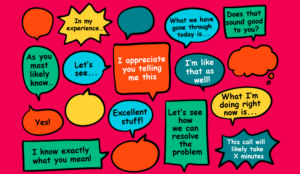Chip McCoy of Genesys shares his advice for handling tricky calls from passionate customers in the contact centre.
The shame of the first (and last) time I honked my car horn in Tennessee still lives with me. When a traffic light turned green, I—a recent transplant from Florida—gave the driver in front of me a good “Floridian minute” and then blew that horn. As that day went on, and in the weeks that followed, I came to realise that Tennesseans don’t honk instantly and liberally at one other.
I’ve since adopted the behaviour of my new neighbours because I want to encourage this way of living. Today, I don’t honk at all—even if it means missing a light. The lesson I learned that day translates easily to the contact centre environment: difficult customers are a sure thing—just like out-of-state drivers. But it’s how you deal with them that makes a difference.
Here are some tips on how to handle difficult customers in the contact centre.
1. Just Listen
Think about a recent time when you were angry about something. You may have just needed someone to listen to you.
We get angry because we want to rectify a perceived injustice or imbalance. Sometimes, our anger increases if we feel that we have no power to correct the imbalance. It’s why we honk our horns, or why we become “difficult customers” ourselves. Sometimes, we simply need empathy. You can ease your own stress when you understand your customer through empathetic listening.
2. Identify the Interaction for Future Consideration
This follows logically from “just listen”. Many contact centre systems haven’t caught up to the omnichannel story, but if your system supports it, record the interaction details.
Then, when your customer communicates again—through chat, email or any other channel—your colleagues can recognise the customer’s original journey. Your winning strategy is to let the customer know that you recognise the previous interactions and you’re committed to completing that journey.
3. Customers Want to Know That They’re Understood
Difficult customers, like anyone, appreciate when you acknowledge their situation—when you show some empathy that yes, you’d be upset, too. Let them know that there’s a path to resolution and that you’re going to get there together.
Customer experience managers: If you have scripting built into your contact centre solution, use parenthetical reminders to support these strategies. Alongside occasional training and email reminders, the use of scripting creates front-line consistency across all agents for greater Net Promoter Score (NPS) results.
4. Send a Follow-up Email
When the interaction is complete, send a “very non-survey” email saying that you recognise the customer’s frustration, with thanks in advance for future feedback, negative and positive. The important thing is not to ask anything further of the customer.
When someone sends you a thank-you note for a present, there’s no gift in it for you, but it feels classy that they took the time to thank you, right? They remembered; that matters.
If your contact centre allows it, integrate this kind of follow-up into your customer journey—via email or your customer’s preferred digital channel. If your systems aren’t unified and it’s difficult to bridge between voice and email, find a way to do it anyway. You’d be surprised at how differentiated you instantly become in the market.
5. Unhonk Your Horn
Difficult customers are a fact of life, and some companies will have more than others. By “Unhonk,” I mean: Don’t spend your coffee breaks tearing down your existing company because they keep creating difficult customers or you’re frustrated with the tools you service the world through.
Rather, build up your colleagues with stories of how you’ve been able to turn a situation around. If you found tips on how you achieved that—say you found customer notes in your contact centre (or how you use sticky notes) that helped you solve a customer’s problem—share those tips. Every company deserves a shot at changing to meet the shifting landscape of consumer behaviour. Be a contributor to something bigger than yourself.
Author: Robyn Coppell
Published On: 3rd Jan 2019 - Last modified: 8th Jan 2019
Read more about - Guest Blogs, Genesys



















